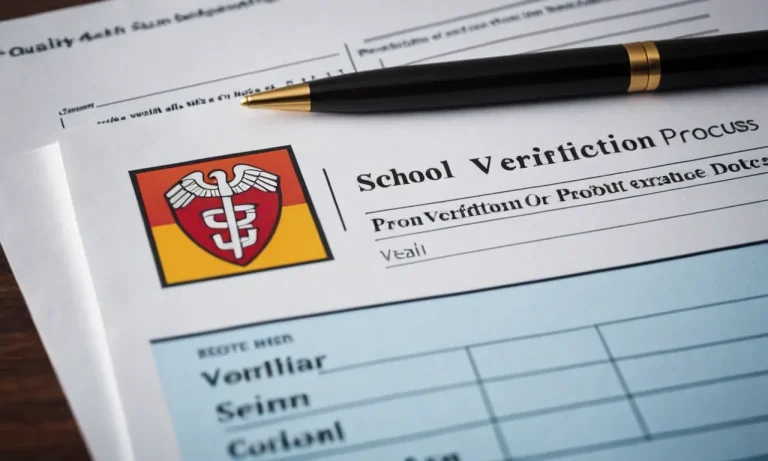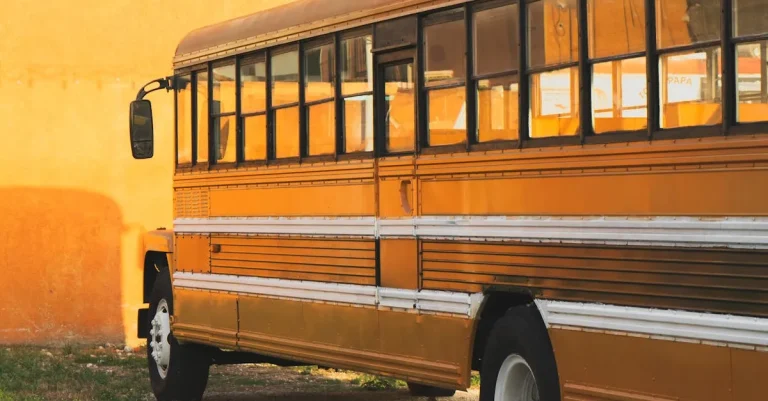Imagine waking up to the sound of heavy rain pounding on your window, and the thought of trudging through the downpour to get to school fills you with dread. You might wonder, ‘Can school be cancelled because of heavy rain?’ The answer is not as straightforward as you might think.
If you’re short on time, here’s a quick answer to your question: Yes, schools can be cancelled due to heavy rain, but the decision is based on various factors and guidelines set by local authorities and school districts.
In this comprehensive article, we’ll explore the circumstances under which schools may be closed due to heavy rain, the decision-making process, and the potential impact on students, parents, and the community.
We’ll also discuss alternative arrangements, such as remote learning, and provide tips for staying safe during heavy rain events.
Factors Considered for School Closures Due to Heavy Rain
When heavy rainfall strikes a region, school authorities face the daunting task of deciding whether to keep schools open or to close them temporarily. This decision is not taken lightly, as it impacts the education and safety of thousands of students and staff members.
Several crucial factors are carefully evaluated to determine the necessity of a school closure due to heavy rain.
Safety Concerns
The primary consideration is the safety of students, teachers, and other staff members. Heavy rain can create hazardous conditions on roads, making commuting to and from school a risky endeavor. According to the National Highway Traffic Safety Administration, wet roads are a significant contributor to school bus accidents.
Authorities must assess the risk of potential accidents, hydroplaning, or visibility issues that could endanger the lives of those traveling to and from school.
Flooding and Road Conditions
Excessive rainfall can lead to localized flooding, rendering some roads impassable or unsafe for travel. School officials closely monitor weather reports and collaborate with local authorities to evaluate road conditions in their district.
If major routes are flooded or deemed hazardous, a school closure may be necessary to prevent students and staff from attempting to navigate through these dangerous areas. According to a study by FloodSmart.gov, over 20% of flood insurance claims come from areas outside designated high-risk zones, highlighting the importance of monitoring local conditions.
Power Outages
Heavy rainfall can sometimes cause power outages, leaving schools without electricity, heating, or air conditioning. This situation not only disrupts the learning environment but also raises concerns about the safety and well-being of students and staff.
Schools may need to close if power outages are widespread or expected to last for an extended period, as they rely on electricity for essential functions like lighting, communication, and emergency systems. According to the U.S.
Energy Information Administration, weather-related events are responsible for over 50% of power outages in the United States.
Structural Damage to School Buildings
In extreme cases, heavy rainfall can cause structural damage to school buildings, such as leaks, flooded basements, or even roof collapses. If a school’s infrastructure is compromised, it may be deemed unsafe for occupancy until repairs are made.
School administrators work closely with local authorities and building inspectors to assess the extent of any damage and determine the necessity of a closure. According to a report by the Environmental Protection Agency, poor indoor air quality in schools can lead to increased absenteeism and decreased student performance, highlighting the importance of maintaining safe and structurally sound school buildings.
Ultimately, the decision to cancel school due to heavy rain is a complex one, involving input from various stakeholders, including school administrators, local authorities, weather experts, and safety officials.
By carefully considering these critical factors, school districts strive to prioritize the well-being and safety of their students, staff, and communities.
The Decision-Making Process for School Closures
When heavy rains or severe weather conditions strike, the decision to cancel school can be a complex process involving multiple stakeholders. Local authorities and school districts typically have well-defined guidelines in place to navigate these situations while prioritizing the safety of students and staff.
Local Authorities and School District Guidelines
Each school district has its own set of guidelines and protocols for determining when to close schools due to inclement weather. These guidelines often consider factors such as the severity of the rainfall, the potential for flooding in surrounding areas, and the impact on transportation routes.
According to a study by the Education Week, nearly 60% of school districts across the United States have specific rainfall thresholds that trigger school closures or delays.
Collaboration with Emergency Services
In times of heavy rainfall, school districts work closely with local emergency services, such as the police, fire department, and weather forecasting agencies. This collaboration ensures that decision-makers have access to real-time information and expert assessments of the situation.
Emergency services can provide valuable insights into road conditions, potential flooding risks, and other safety concerns that may impact the ability to safely transport students to and from school. According to a report by the National Weather Service, around 25% of weather-related school closures are directly attributed to heavy rainfall and the associated risks.
Timely Communication with Parents and Students
Once a decision is made to close schools due to heavy rain, timely communication with parents and students is crucial. School districts utilize various channels to disseminate information, including email notifications, automated phone calls, social media updates, and dedicated school closure hotlines.
Effective communication ensures that families can make necessary arrangements and stay informed about the situation. Many districts now leverage mobile apps and text messaging services to reach parents and students quickly and efficiently.
A survey conducted by the National School Public Relations Association revealed that 89% of parents prefer receiving school closure notifications through multiple channels, with text messages and email being the most preferred methods.
The decision to cancel school due to heavy rain is a multifaceted process that prioritizes the safety and well-being of students, staff, and the community. By following established guidelines, collaborating with emergency services, and maintaining open lines of communication with families, school districts can navigate these challenging situations with confidence and ensure the best possible outcome for all involved.
Alternative Arrangements During School Closures
Remote Learning and Online Classes
When heavy rain forces schools to close, remote learning and online classes have become a popular alternative arrangement. Many schools have implemented robust online learning platforms, such as Google Classroom or Canvas, to ensure continuity of education.
Students can log in from the comfort of their homes and attend virtual classes, submit assignments, and interact with their teachers and classmates. According to a National Center for Education Statistics report, in 2020, 93% of households with school-age children had access to the internet, facilitating remote learning.
😊
Makeup Days and Extended School Years
Another common approach is to schedule makeup days or extend the school year to compensate for the missed instructional time due to heavy rain closures. Many school districts have built-in makeup days in their academic calendars, allowing them to reschedule classes on weekends or during planned breaks.
If the number of missed days exceeds the allotted makeup days, schools may consider extending the school year into the summer months. This option, while ensuring students receive the required instructional hours, can be challenging for families with summer plans or work schedules. 🤔
According to a recent EdWeek report, the average school district in the United States missed around 5 days of instruction due to weather-related closures during the 2022-23 academic year.
Childcare Options for Working Parents
School closures due to heavy rain can pose significant challenges for working parents who need to find alternative childcare arrangements. Some schools may offer on-site childcare services or partner with local organizations to provide supervised activities for students during closure days.
However, these options are often limited and may require additional fees. Parents may also explore community centers, churches, or private childcare providers for temporary care solutions. Don’t forget to check with your employer about potential work-from-home or flexible scheduling options during school closures.
👍
It’s important for schools and families to have contingency plans in place for heavy rain-related closures. By leveraging technology, adjusting academic calendars, and exploring childcare options, communities can work together to minimize disruptions to students’ education and ensure their safety during inclement weather conditions.
Stay informed, be prepared, and embrace the resilience that comes with adapting to unexpected circumstances. 🎉
Staying Safe During Heavy Rain Events
Preparing for Potential Flooding
Heavy rainfall can often lead to flooding, which can be a serious threat to your safety and property. It’s crucial to be prepared for potential flooding scenarios. According to the Federal Emergency Management Agency (FEMA), floods are one of the most common and costly natural disasters in the United States, causing billions of dollars in damage each year.
Staying informed about weather conditions and taking proactive measures can help minimize the impact of flooding.
- Stay updated on weather forecasts and flood warnings issued by official sources like the National Weather Service.
- Identify potential flood risks in your area, such as low-lying areas, basements, or proximity to bodies of water.
- Consider purchasing flood insurance, as standard homeowners’ insurance policies typically don’t cover flood damage.
- Prepare an emergency kit with essential supplies like non-perishable food, water, medications, and a battery-powered radio.
Avoiding Hazardous Areas
During heavy rain events, certain areas can become hazardous and should be avoided. Staying away from these areas can help prevent accidents, injuries, or even loss of life. According to the National Weather Service, around 85% of flood fatalities occur in vehicles. Here are some tips to stay safe:
- Avoid walking or driving through flooded areas, as the water depth and current can be deceptive and dangerous.
- If you encounter a flooded road, turn around and find an alternative route. Don’t risk driving through it, as it only takes a few inches of water to sweep a vehicle away.
- Stay away from downed power lines, as they can be electrically charged and pose a serious risk of electrocution.
- Avoid areas prone to landslides or mudslides, especially if the ground is saturated from heavy rainfall.
Emergency Kits and Supplies
Having an emergency kit and essential supplies on hand can be a lifesaver during heavy rain events and potential flooding situations. Being prepared can help ensure your safety and comfort until the situation stabilizes. According to the Ready.gov website, an emergency kit should include:
- Water (one gallon per person per day for at least three days)
- Non-perishable food and a manual can opener
- Battery-powered or hand-crank radio and a NOAA Weather Radio with tone alert
- Flashlight and extra batteries
- First aid kit and any necessary medications
- Whistle to signal for help
Additionally, you may want to consider including items like rain gear, blankets, a multi-tool, and copies of important documents in your emergency kit. Being prepared and staying vigilant can go a long way in keeping you and your loved ones safe during heavy rain events. 😊
Conclusion
Heavy rain can pose significant challenges for schools, students, and families. While school closures due to heavy rain are not uncommon, the decision-making process involves careful consideration of various factors to ensure the safety and well-being of everyone involved.
By understanding the guidelines and procedures in place, parents and students can better prepare for potential school closures and make alternative arrangements as needed. Additionally, taking proactive measures to stay safe during heavy rain events can help mitigate the risks associated with these weather conditions.
Ultimately, the decision to cancel school due to heavy rain is a complex one, but it is made with the best interests of the community in mind. By working together and staying informed, we can navigate these situations with resilience and ensure that education continues, even in the face of challenging weather conditions.






